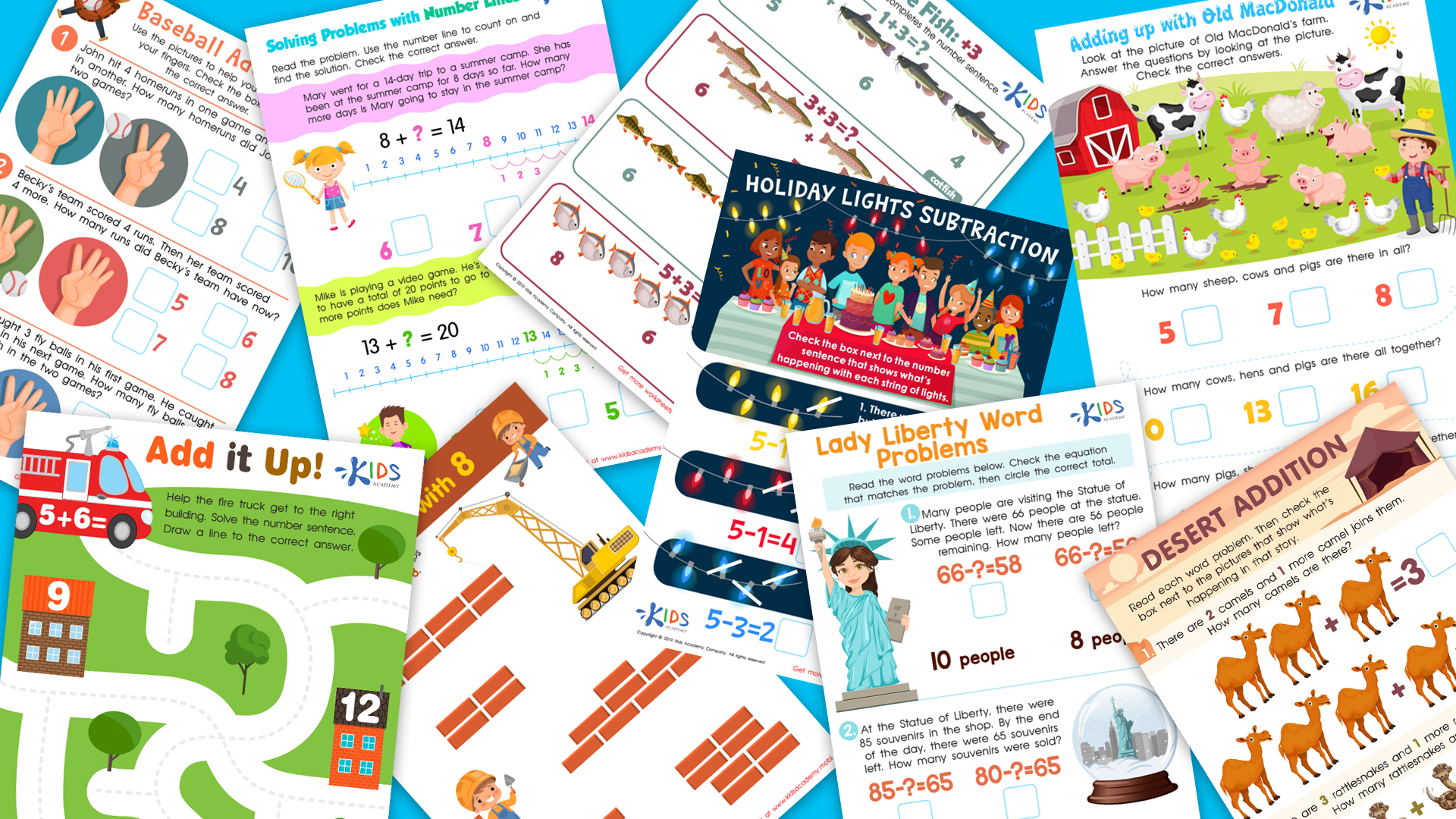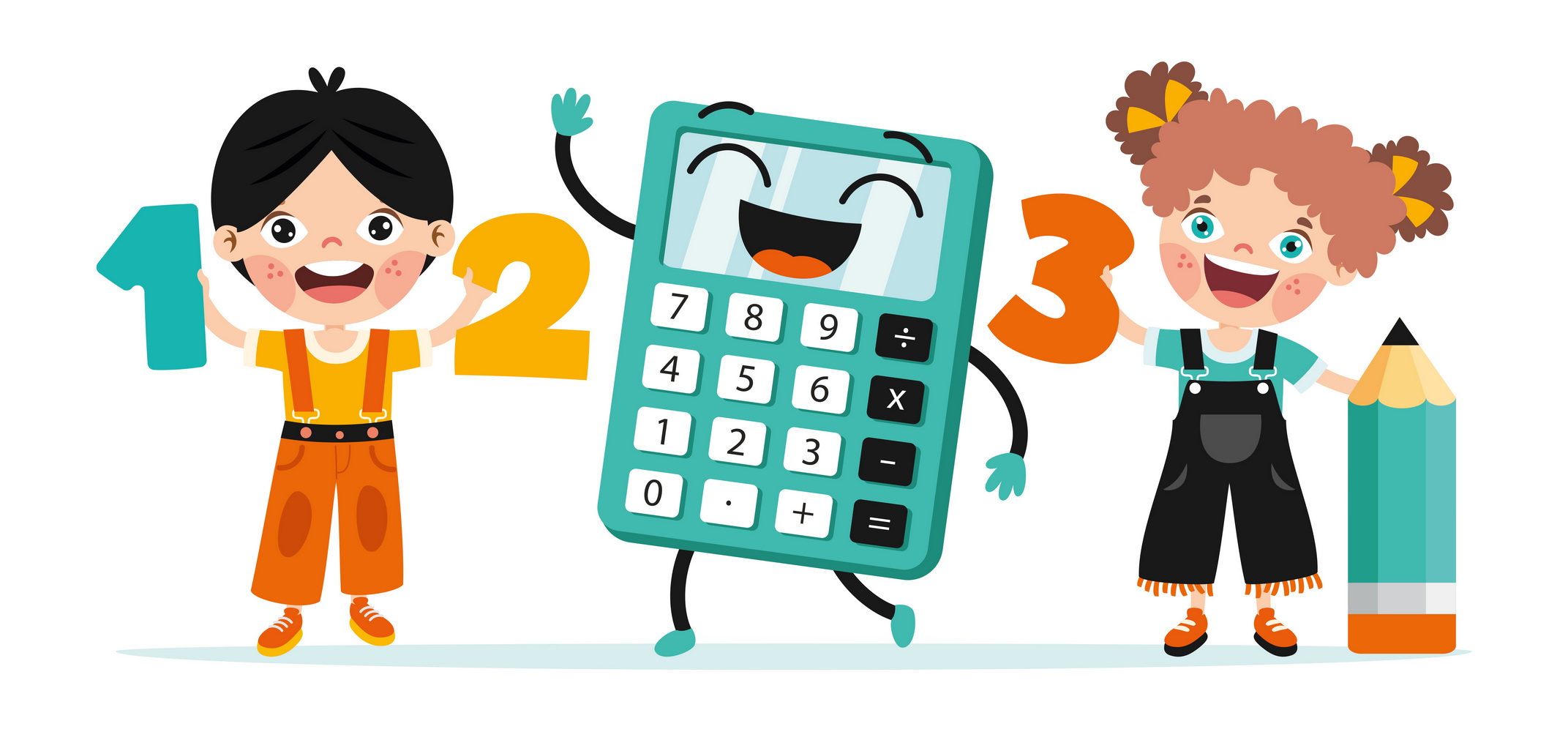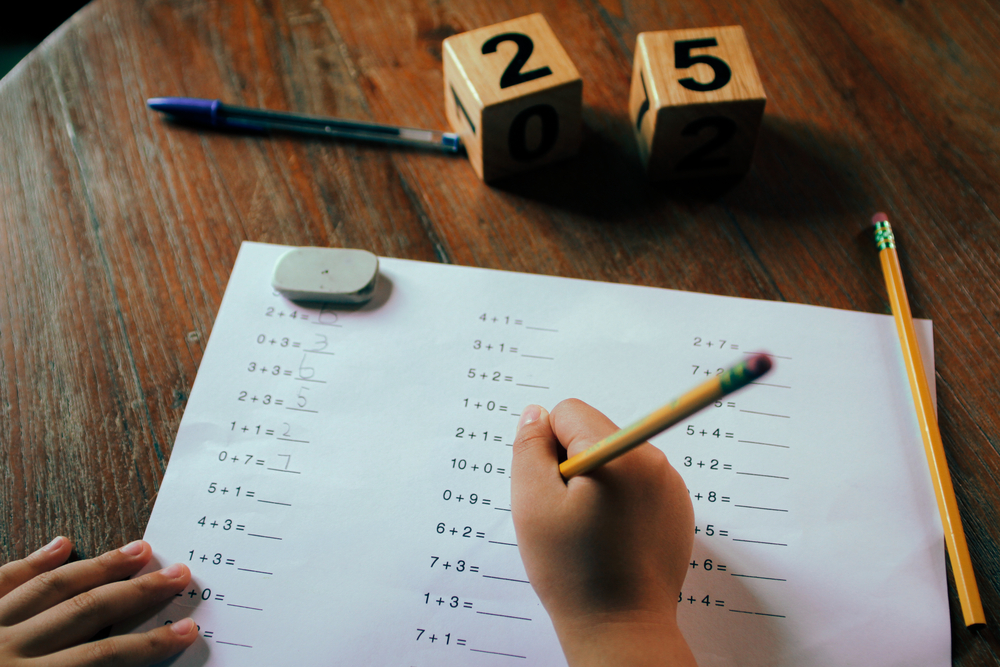Subtraction skills Word Problems Worksheets for Ages 3-7
6 filtered results
-
From - To
"Subtraction Skills Word Problems Worksheets for Ages 3-7" are specially designed to make learning subtraction fun and engaging for young children. These worksheets combine colorful illustrations with practical word problems to help kids grasp the concept of subtraction in real-life scenarios. By practicing through playful and easy-to-understand stories, children will enhance their problem-solving skills and numerical understanding, laying a solid foundation for future math success. Perfect for classrooms or at-home learning, these worksheets cater to early learners, helping them transition smoothly from basic counting to mastering subtraction with confidence. Download now and watch your child's math skills grow!
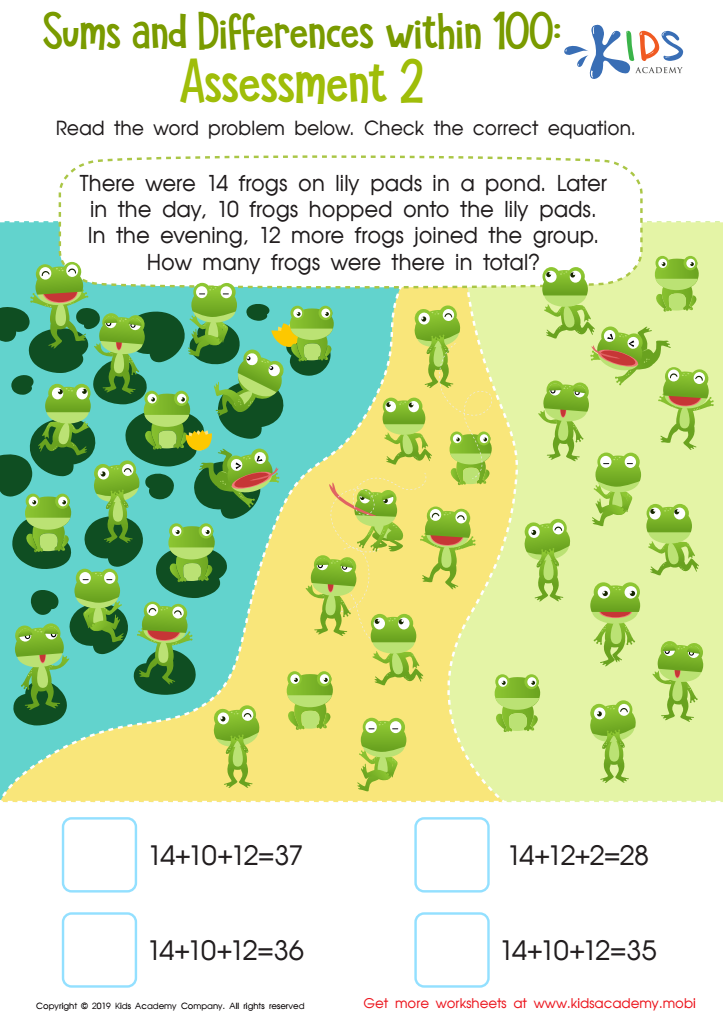

Sums and Differences Within 1 - Assessment 2 Worksheet
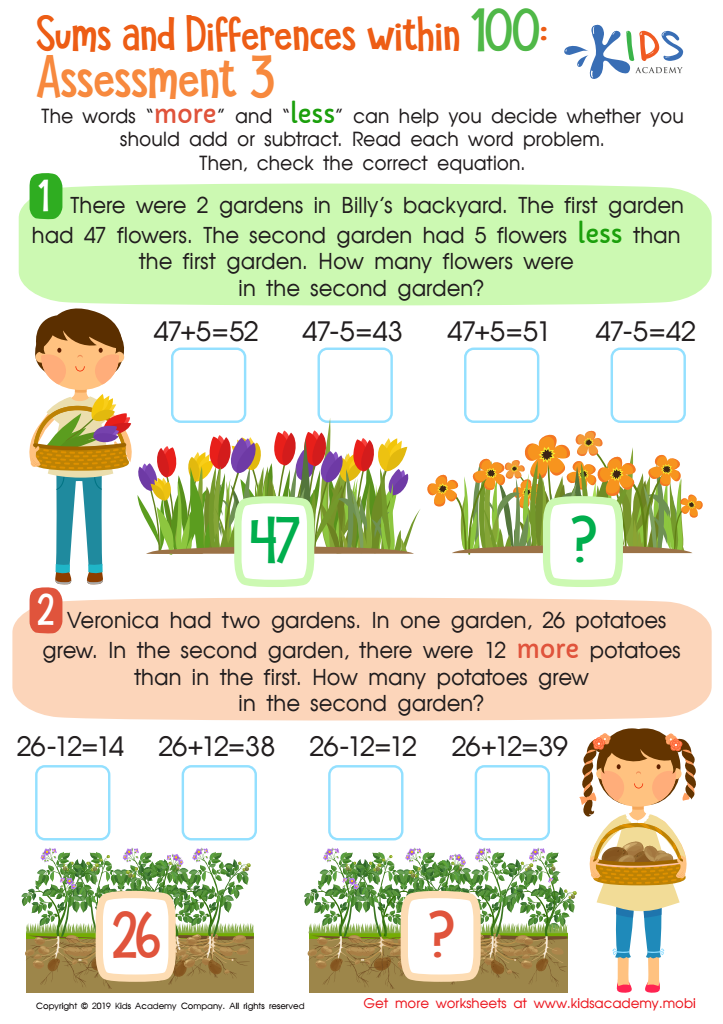

Sums and Differences Within 1 - Assessment 3 Worksheet
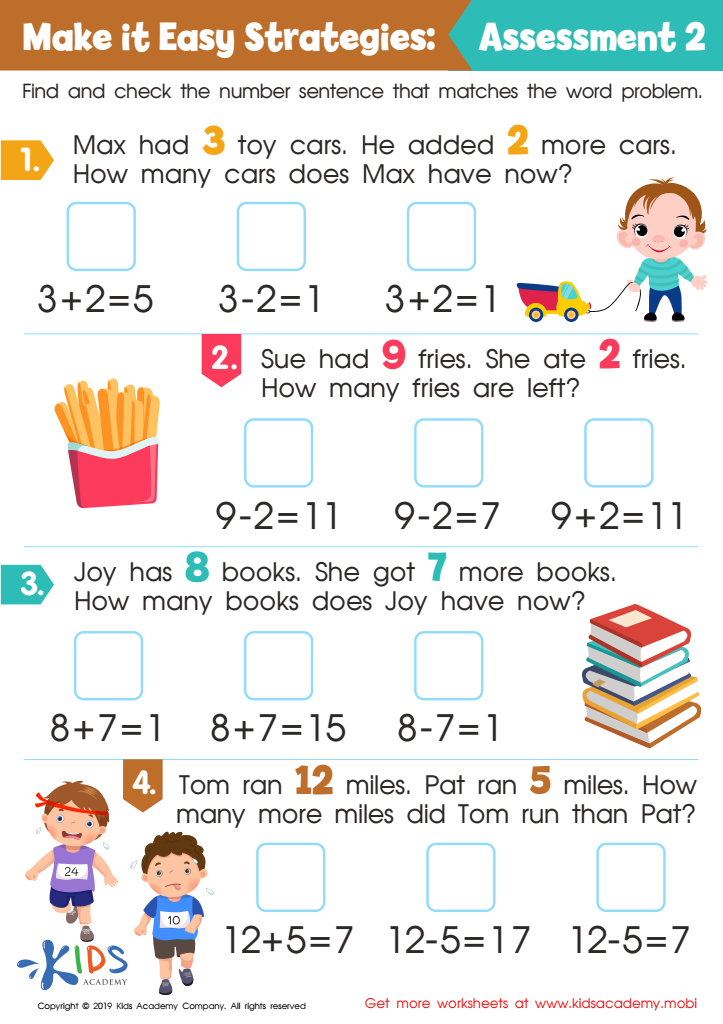

Make it Easy Strategies: Assessment 2 Worksheet
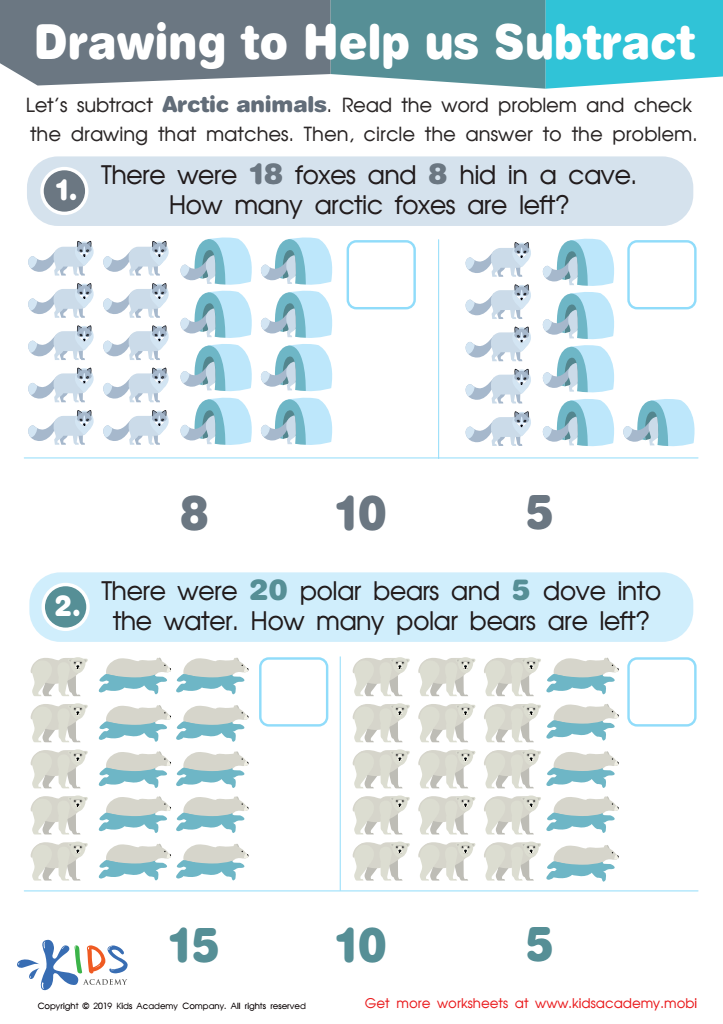

Drawing to Help Us Subtract Worksheet
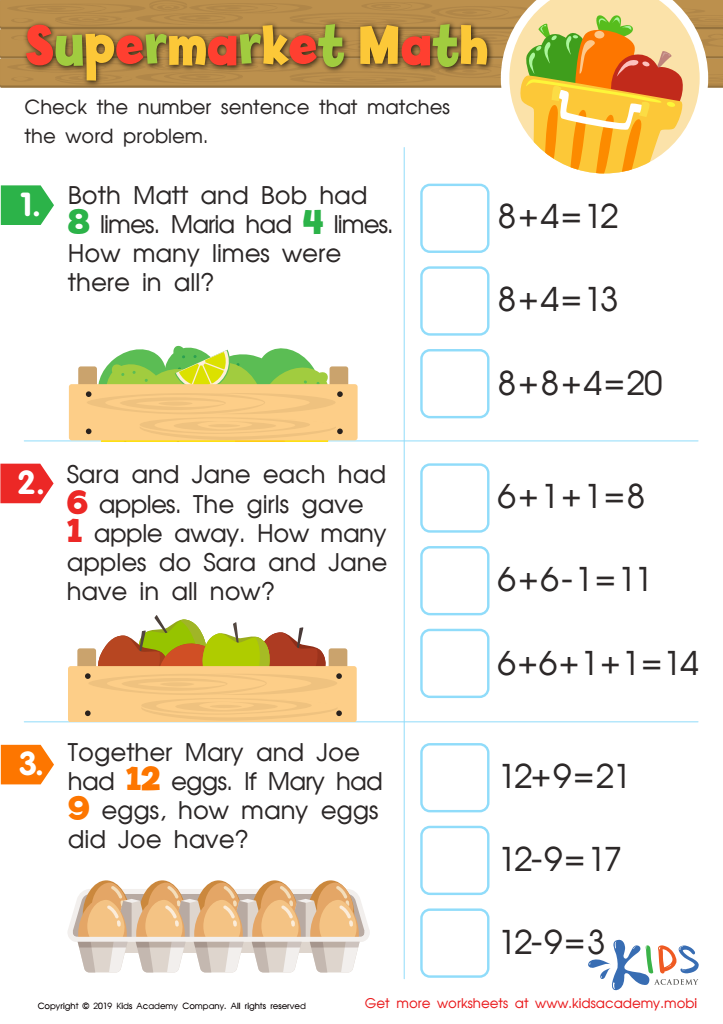

Supermarket Math Worksheet
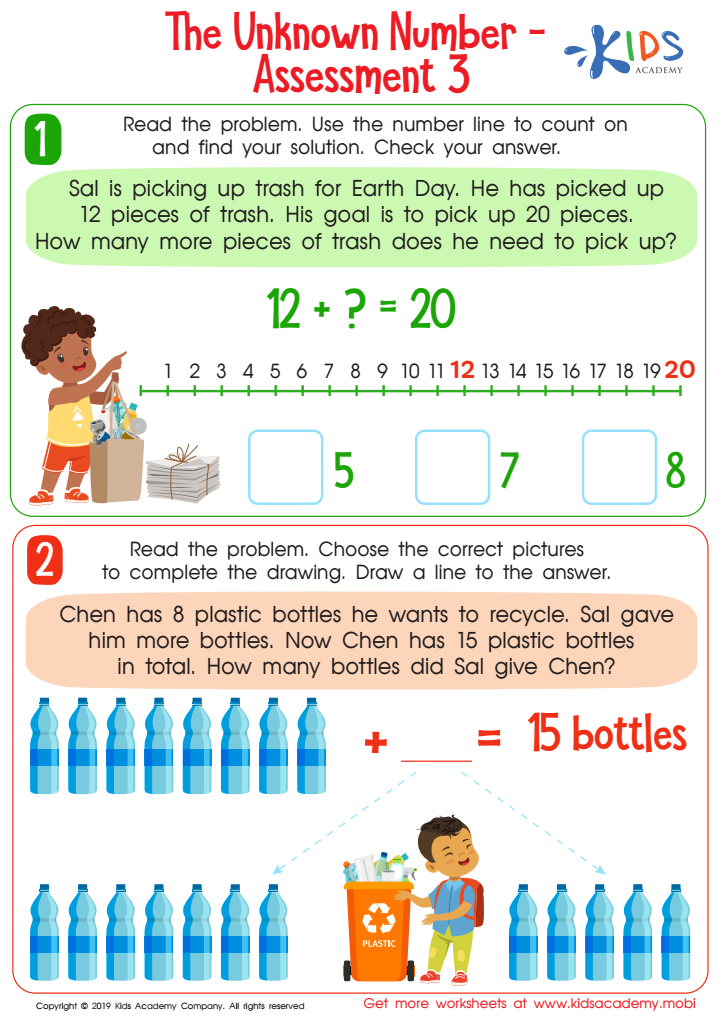

The Unknown Number - Assessment 3 Worksheet
Subtraction skills word problems for children ages 3-7 are crucial for several important reasons. Firstly, they help develop fundamental math skills that form the basis for more advanced mathematical concepts. Understanding subtraction means that children are starting to grasp the idea of taking away, which is essential for their future academic success.
Secondly, word problems offer a context for subtraction, making the abstract concept more concrete. By relating math to everyday situations—whether it's sharing cookies or counting toys—children can better understand why they are learning subtraction and how it's applicable to real life.
Moreover, solving word problems promotes critical thinking and problem-solving skills. It encourages children to read carefully, comprehend the scenario, and decide how to approach solving the issue. These cognitive skills are valuable not just in math but across all areas of learning and day-to-day decision-making.
In addition, early proficiency in math builds a child’s confidence and promotes a positive attitude toward learning. Successfully solving subtraction problems can instill a sense of achievement and motivate them to tackle increasingly complex problems.
Lastly, collaborating with parents or teachers on word problems not only aids in comprehension but strengthens the child’s communication and reasoning abilities, laying a solid foundation for future collaborative academic endeavors.
 Assign to My Students
Assign to My Students






